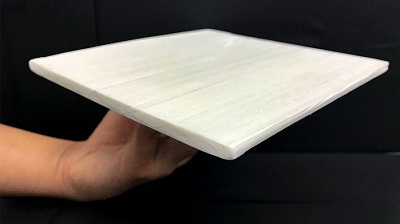 Friday, July 26, 2024
Friday, July 26, 2024  Friday, July 26, 2024
Friday, July 26, 2024 
As blogged on ScienceMag.org, households in the U.S. Southwest spend about $400 per year to cool their homes, about twice the national average. Now, a new type of wood that radiates heat into space could offer some relief. If used on a building’s exterior, such as in siding and roofs, the material could drop a building’s temperature as much as 10°C and reduce cooling costs as much as 60%.
“This is just brilliant work,” says John Simonsen, a chemist who specializes in wood science at Oregon State University in Corvallis. However, he says, the new wood could be expensive, and potential energy savings may not offset the price.
When most materials heat up, they emit that heat as photons of near infrared (IR) light. The light is readily absorbed by molecules in the surrounding air, trapping the heat—and keeping houses, for example, hot. But in the past 2 years, researchers have devised plastic films and paints that absorb heat and re-emit that energy at longer mid-IR wavelengths, which air doesn’t absorb. If emitted toward the sky, these photons pass unimpeded and dump their energy into deep space. But to use these materials in buildings, engineers need to laminate rooftop or siding materials with the plastics or apply the heat-emitting paints.
To see if the same attributes could be engineered into a building’s structure, Liangbing Hu, a materials scientist at the University of Maryland in College Park, looked at wood. Wood consists of three main components: cellulose and hemicellulose, which form long strawlike structures, and lignin, which acts as a glue holding the straw strands together. Lignin is a strong emitter of IR light, so Hu and his colleagues knew they had to ditch it.
The researchers hit upon a simple chemical procedure. They soaked basswood in a solution of hydrogen peroxide, which chops normally long lignin molecules into small fragments. The fragments diffuse out of the solution and can be washed away. The team then used a hot press, an industrial vise for making wood composites, to compress the remaining cellulose and hemicellulose components together. The result was an engineered wood with eight times the strength of natural wood.
Keep reading this blog on ScienceMag.org
Watch the video and learn more about Construction Links Network – the peer-to-peer network sharing platform for the construction, building and design community.
Ideal for YOUR Press Releases | Project Updates | New Appointments | Awards & Milestones | Company News | New Products/Services | Brochures | Videos | Infographics | Blog Sharing | Events and More